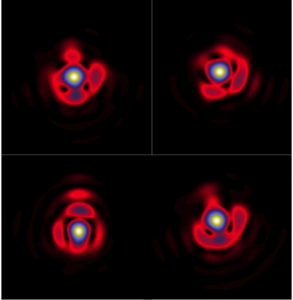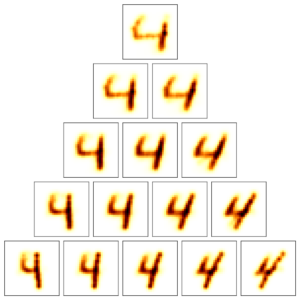Optimal Transport
Optimal Transport theory is a rich and old field of study in mathematics, as it emerges from many very common real-life problems: Given a heap of sand and a hole in the ground, what is the least-effort way to fill in the hole? How to distribute the production of several mines into several factories? Recent advances in numerical schemes have further made practical uses of Optimal Transport possible in many contexts, such as applications to image processing and machine learning. CosmoStat members have contributed to the exploration of some of these new possibilities, and are exploring new exciting uses of Optimal Transport for solving long-standing problems in cosmology.
Point Spread Function
Every optical instrument, including the telescopes used in astrophysics, causes a slight blurring effect. Correct modelling of this effect, that is, of the instrument's Point Spread Function (PSF), is a key element if one hopes to correctly measure the effects of Weak Gravitational Lensing. This PSF is known to vary, not only depending on where within the instrument's view the objects are located, but also with the colour of these objects. However, these variations are known to be smooth - making the changes undergone by the PSF between a very low wavelength and a much higher one not entirely unlike the intermediary steps in the transportation of a heap of sand into a differently-shaped hole in the ground. For this reason, the use of Optimal Transport-based methods is an interesting prospect for the PSF Estimation problem.
Dictionary Learning
Dictionary learning is a common method to learn an appropriate representation of data. In traditional approaches, one tries to find the best set of objects that can best reconstruct the dataset when added together - these objects make up the dictionary, and any new data similar to the dataset used can then be represented (or "translated") using that dictionary.
Instead of simply adding together the elements of our dictionary, one can instead use the Optimal Transport geometry. One way to think about this approach is that the dictionary we learn are some extreme states away from our dataset, which can be reconstructed as intermediary steps in the transportation between these extreme states.


